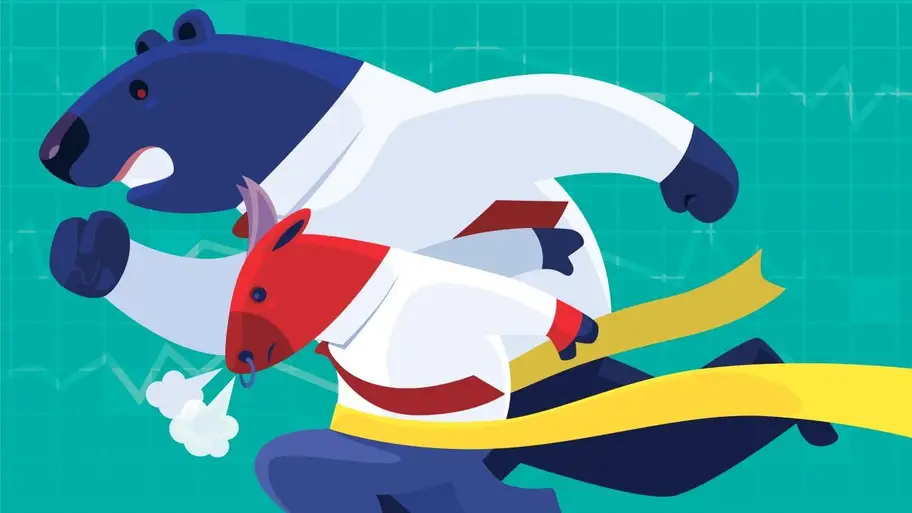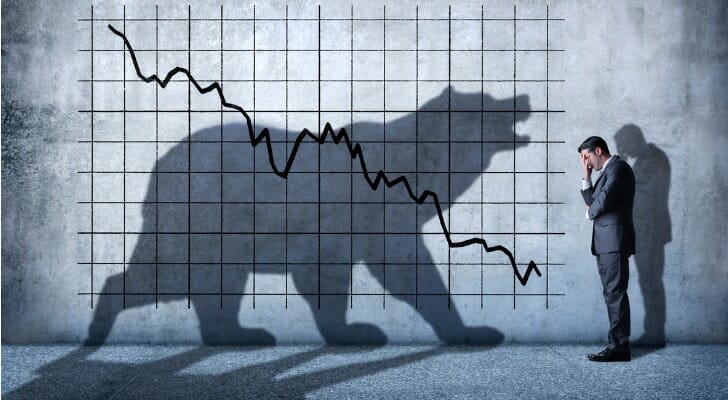Difference Of Bullish vs. Bearish is definitely something you’ve heard if you follow the stock market in any way. But how do these creatures relate to investing? Let’s examine what it means when someone is described as bullish or bearish.

Table of Contents
What does it mean to be bullish?
A bullish person anticipates that prices will increase over a specific time period. The phrase can refer to entire asset classes like real estate or commodities, large market indexes like the S&P 500, particular industries, specific industries, and even individual stocks. To keep in mind that being bullish means anticipating rising prices, it could be helpful to visualize a charging bull raising its horns.
A bull market is an extended period of rising prices that is typically anticipated to continue for some time. A bull market is typically considered to have started when prices have increased by at least 20% from their most recent low. A bull market can extend for years, as it did with stocks from the financial crisis’ lowest point in 2009 to the onset of the global pandemic in March 2020.
Where the Term Bullish Comes From?
Speculative buying were originally meant by the name “bull,” as opposed to a general sense of optimism about prices and trend lines. The phrase originally described when someone grabbed a stock in the hopes that it would increase in value. The phrase eventually changed over time to refer to the person making that investment. It subsequently spread to the idea that prices will increase in general.
Although etymologists can’t agree on the precise origin of the phrase, it probably originated as a counterpunch to the term “bear.” Although there are numerous views, this is the bull market’s most widely acknowledged origin. The bull strikes by sweeping its horns upward, which is how optimistic investors anticipate the market to move. This is perhaps the most generally reported alternative source for the name.
On the other hand, according to this notion, a bear market describes how a bear will swipe its paw downward. While bulls are frequently mentioned favorably in literature across the Western canon, etymologists have discovered less support for this particular theory in any historical documents.
What does it mean to be bearish?

The opposite of bullish is pessimistic, which is the expectation that prices would decline over time. This word can be used to describe the forecast for any financial asset, including stocks in general or a specific stock like Tesla. Consider the claws of a bear crushing its prey to help you recall that “bearish” refers to declining prices.
An extended period of dropping prices characterizes a bear market, which is essentially the opposite of a bull market. Typically, a bear market starts when prices have dropped at least 20% from their most recent high. In the past, stock market bull markets have typically outlasted bear markets. When prices dropped more than 30% in a matter of weeks starting in March 2020, the American stock market entered a bear market. But later that year, a new bull market began, and the rebound happened almost as quickly.
Where the Term Bearish Comes From?
The phrase “bear market” possibly originated from a fable and a real-world example. Generally speaking, it has to do with the 18th-century commerce in bear skins. Occasionally during this time period, fur dealers would sell a bear’s hide that they had not yet captured. By dealing in a commodity they did not possess in the anticipation that the market price would decline, they were engaging in an early form of short selling. The trader would, in theory, go out and purchase a bearskin for less than the original sale price and profit from the transaction when it came time to deliver on the bearskin.
While it did so frequently enough to maintain the practice, it typically failed. This gave rise to idioms that were in use at the time. These include “sell the bearskin,” “bearskin jobber,” and “don’t sell the bear’s skin before trapping the bear.” All of these expressions were essentially warnings against speculation and making unreliable commitments, whereas a bearskin jobber was a slang term for a fraud and liar. The modern counterpart would be something along the lines of “snake oil salesman” and “don’t count your chickens before they hatch.”
But among investors and stock traders, who were aware of the practice of gambling on an impending slump, the expressions took on a more precise connotation. Investors began to refer to stock dealers who traded stocks the same way shady fur traders traded pelts under the terms “bearskin traders” and finally just “bear traders.” A “bear” engaged in what is known as a “short sale,” or the sale of a stock that he did not yet own, in a manner similar to how trappers once sold the bear’s hide even though they had not yet captured it.
The term “bear” eventually grew. Investors started using the terms “bearish” and “bear market” to describe anyone who anticipated price declines rather than just short sale dealers.
How to invest during bull or bear markets?
You could change your assets to benefit from the shifting conditions if you could predict when bull or bear markets would start and end. The truth is that once investors understand bull and bear markets, it’s usually too late to profit from the shift.
It’s crucial to keep in mind that equities are a component of your long-term investment strategy and that you’ll encounter both bull and bear markets throughout your investing career. Over time, stocks have a propensity to increase more than decrease, therefore bull markets are more likely to occur than bear markets. Consider investing for the long term in low-cost index funds while being aware that there will be ups and downs.
Dollar-cost averaging is one strategy that can assist you in profiting from the market’s fluctuations. You can purchase more shares when prices are lower and fewer shares when prices are higher by consistently making contributions and investments over time. These payments may be made to your personal traditional or Roth IRA or to a business retirement plan like a 401(k).
Bottom line
Bears believe prices are headed lower, while bulls believe they are rising. Avoid getting sucked into trying to predict when a bull or bear market might start or end. Do your best to adopt a long-term perspective and consider your investments as a component of your broader financial strategy.
Frequently asked questions
What’s better bearish or bullish?
Simply expressed, being “bullish” indicates that the investor expects the price of a stock or the market as a whole to rise. On the other hand, investors who think a stock will decline or underperform are said to be “bearish.”
What does it mean when an investor is bearish?
A bear investor is one who has a negative outlook on the markets and believes that prices will drop in the short- to medium-term. To capitalize on falling prices, a negative investor may take short bets in the market. Over the long term, bullish investors typically triumph because bears are frequently contrarian investors.
Is bullish sell or buy?
Based on their analysis, bullish traders think that a market will see an increase in price movement. Going long, or being bullish, is purchasing an underlying market in order to sell it later on for a profit once the price has increased.





Leave a Reply
You must be logged in to post a comment.